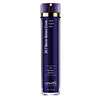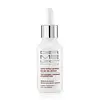What's inside
What's inside
 Key Ingredients
Key Ingredients

 Benefits
Benefits

 Concerns
Concerns

No concerns
 Ingredients Side-by-side
Ingredients Side-by-side

Water
Skin ConditioningCarthamus Tinctorius Oleosomes
EmollientButyrospermum Parkii Butter
Skin ConditioningMacadamia Integrifolia Seed Oil
Skin ConditioningNiacinamide
SmoothingYeast Extract
Skin ConditioningAmmonium Acryloyldimethyltaurate/Vp Copolymer
Helianthus Annuus Seed Oil
EmollientPhospholipids
Skin ConditioningAlpha-Arbutin
AntioxidantHyaluronic Acid
HumectantOphiopogon Japonicus Root Extract
Skin ConditioningHydrolyzed Candida Saitoana Extract
Skin ProtectingSea Whip Extract
Skin ConditioningLycium Chinense Fruit Extract
AntioxidantVaccinium Angustifolium Fruit Extract
Skin ProtectingVaccinium Macrocarpon Fruit Extract
AstringentRosmarinus Officinalis Leaf Extract
AntimicrobialPanthenol
Skin ConditioningSerum Albumin
HumectantTocopheryl Acetate
AntioxidantUbiquinone
AntioxidantAlanyl Glutamine
HumectantLeuconostoc/Radish Root Ferment Filtrate
AntimicrobialXanthan Gum
EmulsifyingPhytic Acid
Polysorbate 20
EmulsifyingCaprylic/Capric Triglyceride
MaskingPhenoxyethanol
PreservativeCaprylyl Glycol
EmollientEthylhexylglycerin
Skin ConditioningHexylene Glycol
EmulsifyingPotassium Sorbate
PreservativeSodium Chloride
MaskingWater, Carthamus Tinctorius Oleosomes, Butyrospermum Parkii Butter, Macadamia Integrifolia Seed Oil, Niacinamide, Yeast Extract, Ammonium Acryloyldimethyltaurate/Vp Copolymer, Helianthus Annuus Seed Oil, Phospholipids, Alpha-Arbutin, Hyaluronic Acid, Ophiopogon Japonicus Root Extract, Hydrolyzed Candida Saitoana Extract, Sea Whip Extract, Lycium Chinense Fruit Extract, Vaccinium Angustifolium Fruit Extract, Vaccinium Macrocarpon Fruit Extract, Rosmarinus Officinalis Leaf Extract, Panthenol, Serum Albumin, Tocopheryl Acetate, Ubiquinone, Alanyl Glutamine, Leuconostoc/Radish Root Ferment Filtrate, Xanthan Gum, Phytic Acid, Polysorbate 20, Caprylic/Capric Triglyceride, Phenoxyethanol, Caprylyl Glycol, Ethylhexylglycerin, Hexylene Glycol, Potassium Sorbate, Sodium Chloride
Water
Skin ConditioningPentylene Glycol
Skin ConditioningPropanediol
SolventSodium Lactate
BufferingGlycereth-26
HumectantGalactoarabinan
Camellia Sinensis Leaf Extract
AntimicrobialSymphytum Officinale Leaf Extract
Skin ConditioningAloe Barbadensis Leaf Extract
EmollientGlycerin
HumectantPhenoxyethanol
PreservativeEthylhexylglycerin
Skin ConditioningTocopherol
AntioxidantDehydroxanthan Gum
Emulsion StabilisingAlpha-Arbutin
AntioxidantCitrus Junos Seed Extract
AntioxidantNiacinamide
SmoothingSodium Hyaluronate
HumectantSodium PCA
HumectantArginine
MaskingAspartic Acid
MaskingPCA
HumectantGlycine
BufferingAlanine
MaskingSerine
MaskingValine
MaskingProline
Skin ConditioningThreonine
Isoleucine
Skin ConditioningHistidine
HumectantPhenylalanine
MaskingWater, Pentylene Glycol, Propanediol, Sodium Lactate, Glycereth-26, Galactoarabinan, Camellia Sinensis Leaf Extract, Symphytum Officinale Leaf Extract, Aloe Barbadensis Leaf Extract, Glycerin, Phenoxyethanol, Ethylhexylglycerin, Tocopherol, Dehydroxanthan Gum, Alpha-Arbutin, Citrus Junos Seed Extract, Niacinamide, Sodium Hyaluronate, Sodium PCA, Arginine, Aspartic Acid, PCA, Glycine, Alanine, Serine, Valine, Proline, Threonine, Isoleucine, Histidine, Phenylalanine
 Reviews
Reviews

Ingredients Explained
These ingredients are found in both products.
Ingredients higher up in an ingredient list are typically present in a larger amount.
Alpha-Arbutin is made from hydroquinone and glucose. It may also be derived from the fermentation of soybeans.
This ingredient an antioxidant, meaning it helps protect your skin cells against damage.
Studies show this ingredient helps improve hyperpigmentation and fade discoloration.
Alpha-Arbutin may be used with other ingredients that help with hyperpigmentation. These ingredients include retinol, Vitamin C, niacinamide, and tranexamic acid.
Learn more about Alpha-ArbutinEthylhexylglycerin (we can't pronounce this either) is commonly used as a preservative and skin softener. It is derived from glyceryl.
You might see Ethylhexylglycerin often paired with other preservatives such as phenoxyethanol. Ethylhexylglycerin has been found to increase the effectiveness of these other preservatives.
Niacinamide is a multitasking form of vitamin B3 that strengthens the skin barrier, reduces pores and dark spots, regulates oil, and improves signs of aging.
And the best part? It's gentle and well-tolerated by most skin types, including sensitive and reactive skin.
You might have heard of "niacin flush", or the reddening of skin that causes itchiness. Niacinamide has not been found to cause this.
In very rare cases, some individuals may not be able to tolerate niacinamide at all or experience an allergic reaction to it.
If you are experiencing flaking, irritation, and dryness with this ingredient, be sure to double check all your products as this ingredient can be found in all categories of skincare.
When incorporating niacinamide into your routine, look out for concentration amounts. Typically, 5% niacinamide provides benefits such as fading dark spots. However, if you have sensitive skin, it is better to begin with a smaller concentration.
When you apply niacinamide to your skin, your body converts it into nicotinamide adenine dinucleotide (NAD). NAD is an essential coenzyme that is already found in your cells as "fuel" and powers countless biological processes.
In your skin, NAD helps repair cell damage, produce new healthy cells, support collagen production, strengthen the skin barrier, and fight environmental stressors (like UV and pollution).
Our natural NAD levels start to decline with age, leading to slower skin repair, visible aging, and a weaker skin barrier. By providing your skin niacinamide, you're recharging your skin's NAD levels. This leads to stronger, healthier, and younger looking skin.
Another name for vitamin B3 is nicotinamide. This vitamin is water-soluble and our bodies don't store it. We obtain Vitamin B3 from either food or skincare. Meat, fish, wheat, yeast, and leafy greens contain vitamin B3.
The type of niacinamide used in skincare is synthetically created.
Learn more about NiacinamidePhenoxyethanol is a preservative that has germicide, antimicrobial, and aromatic properties. Studies show that phenoxyethanol can prevent microbial growth. By itself, it has a scent that is similar to that of a rose.
It's often used in formulations along with Caprylyl Glycol to preserve the shelf life of products.
Water. It's the most common cosmetic ingredient of all. You'll usually see it at the top of ingredient lists, meaning that it makes up the largest part of the product.
So why is it so popular? Water most often acts as a solvent - this means that it helps dissolve other ingredients into the formulation.
You'll also recognize water as that liquid we all need to stay alive. If you see this, drink a glass of water. Stay hydrated!
Learn more about Water